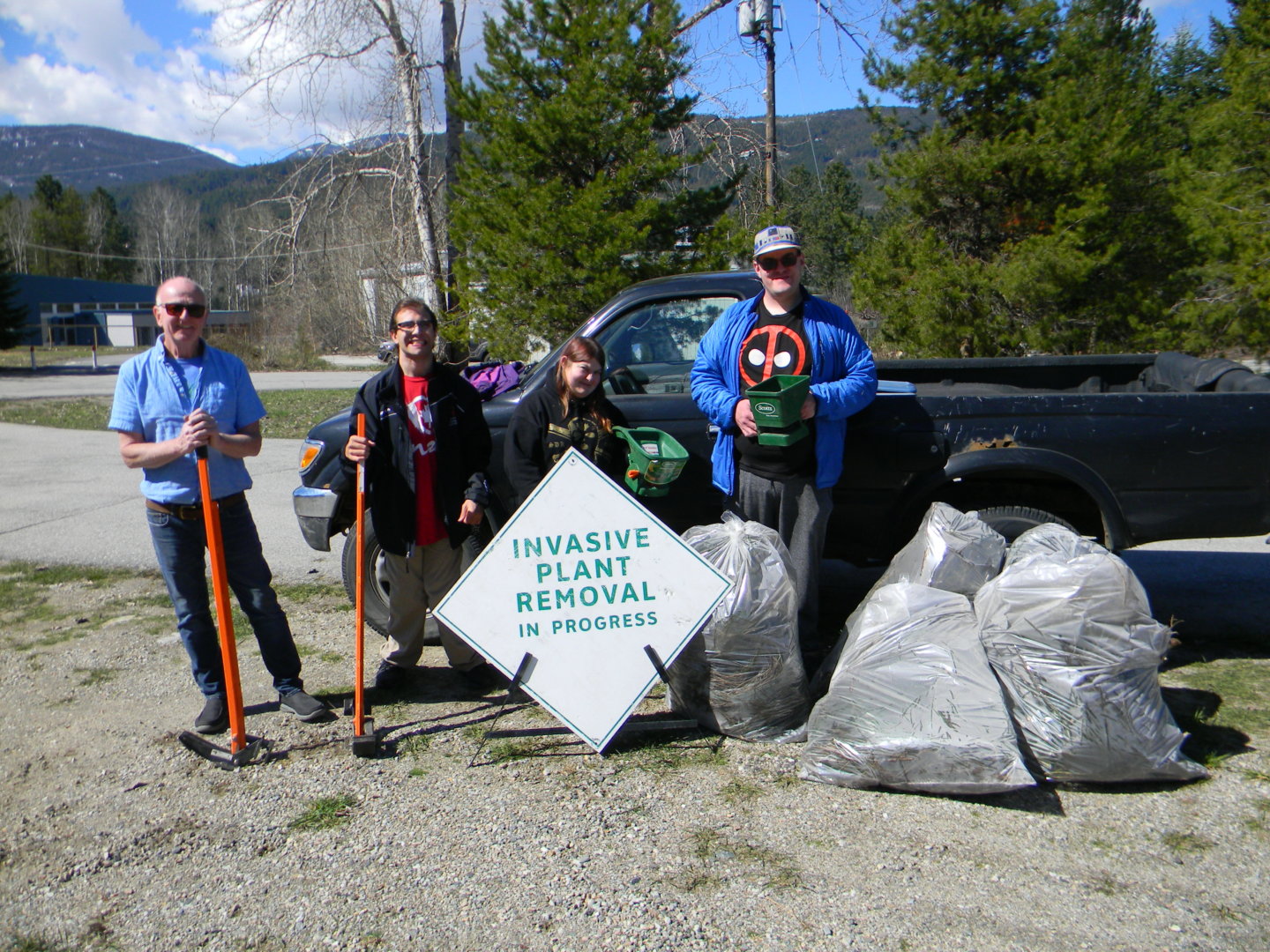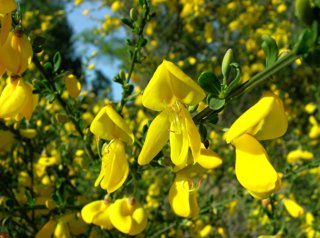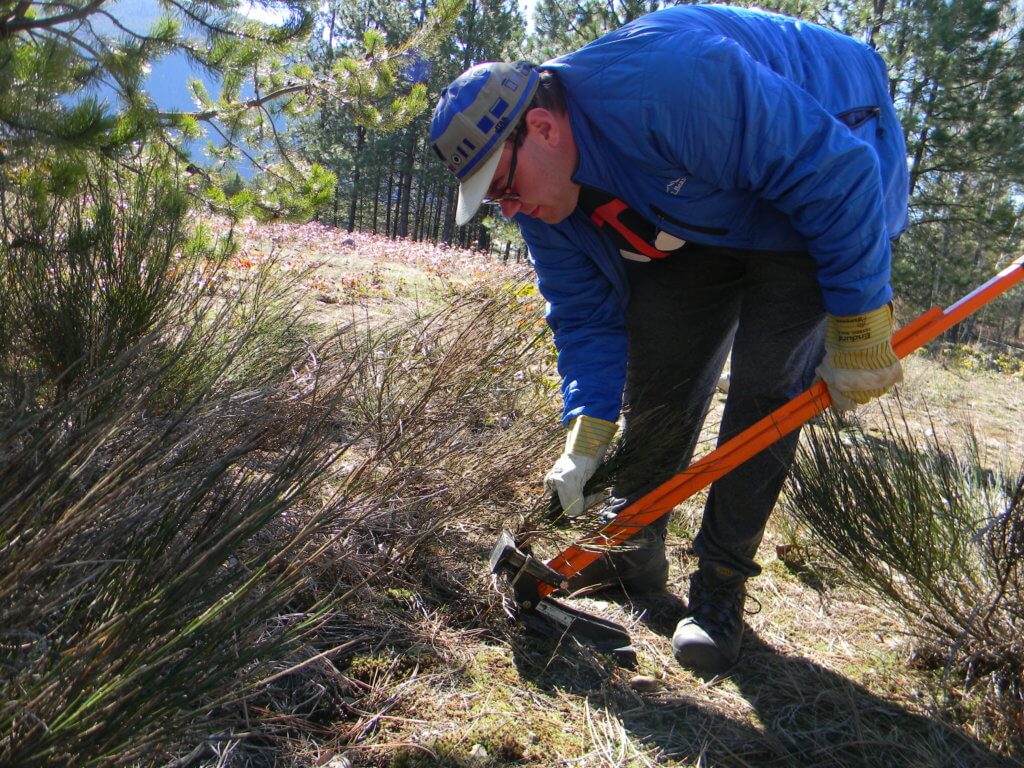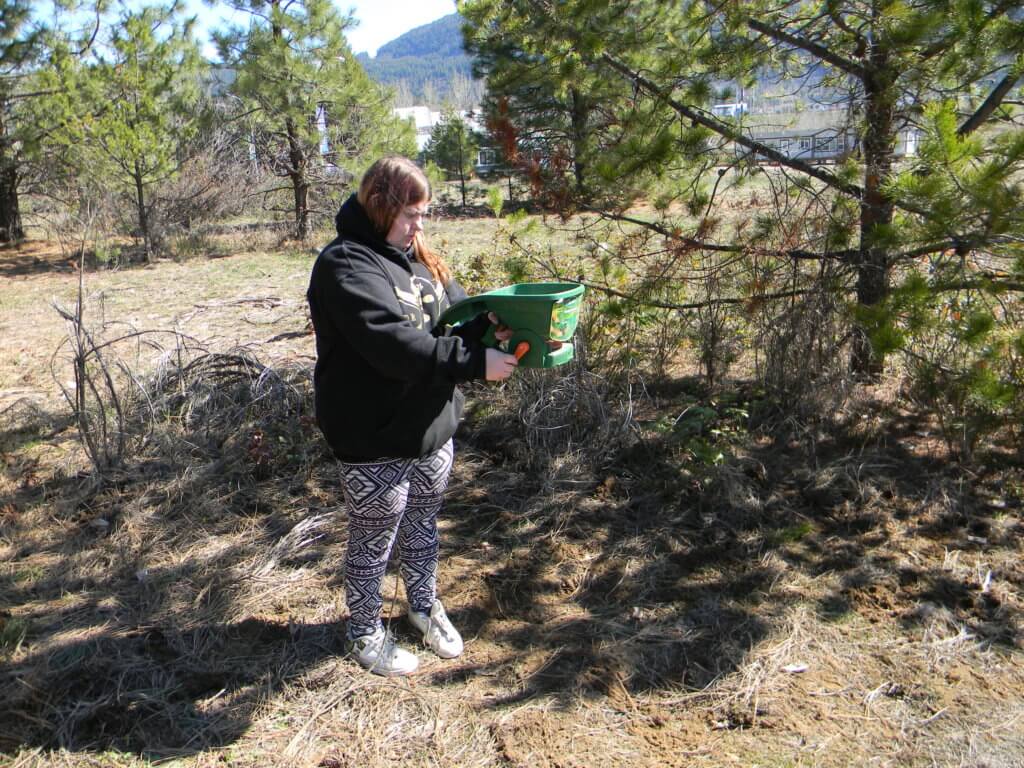With Earth Day just around the corner a small but mighty army of volunteers from Selkirk College’s Adult Special Education (ASE) program helped CKISS remove invasive scotch broom on April 16, 2019. CKISS has been hosting community weed pulls at the scotch broom infestation located by the Kootenay Gallery for the past three years and are seeing fewer plants every year! Sunny skies and moist soil made it ideal conditions to hold the community weed pull. Check out the before and after photos below.


What does scotch broom look like?
- Yellow pea-like flower sometime with a red marking in the middle
- Grows 1m to 3m tall and has a green woody stem
- Tight against the stem are seedpods that are initially green and turn brown to black as they mature.

Why is scotch broom a problem?
- Fire hazard
- Obstructs driver views on roadsides
- Takes over rangelands and plantations resulting in decreased crop yields and plantation failures

How to mechanically control scotch broom?
- Cut larger plants below ground before flowering and seed set (late winter, early spring).
- Mechanical control is most effective when entire plant is removed, no seeds are dropped and soil disturbance is minimized. Plants with stems less than 1.5 cm diameter can be hand pulled. We like to use a tool called the ‘Extractigator’. To see this handy tool in use click here.
- After mechanical treatment, re-vegetate with appropriate invasive free seeds.

Extractigator in use 
Re-seeding the disturbed soil.
What do you dispose of scotch broom?
- Cut up scotch broom into smaller parts and place all plant material in clear plastic bags and bring to a landfill. All landfills within the RDCK and RDKB accept invasive plant species for free. Ensure your material is bagged in clear plastic bags and notify the attendant that you have invasive plant species. Plants must be identifiable through the bag. For more information please see the RDCK Resource Recovery Bylaw
- Do not dump garden waste in public parks, natural areas, and roadsides, it is ILLEGAL to do so and is associated with hefty fines
- Avoid putting invasive plants in your compost, as they often quickly re-establish







